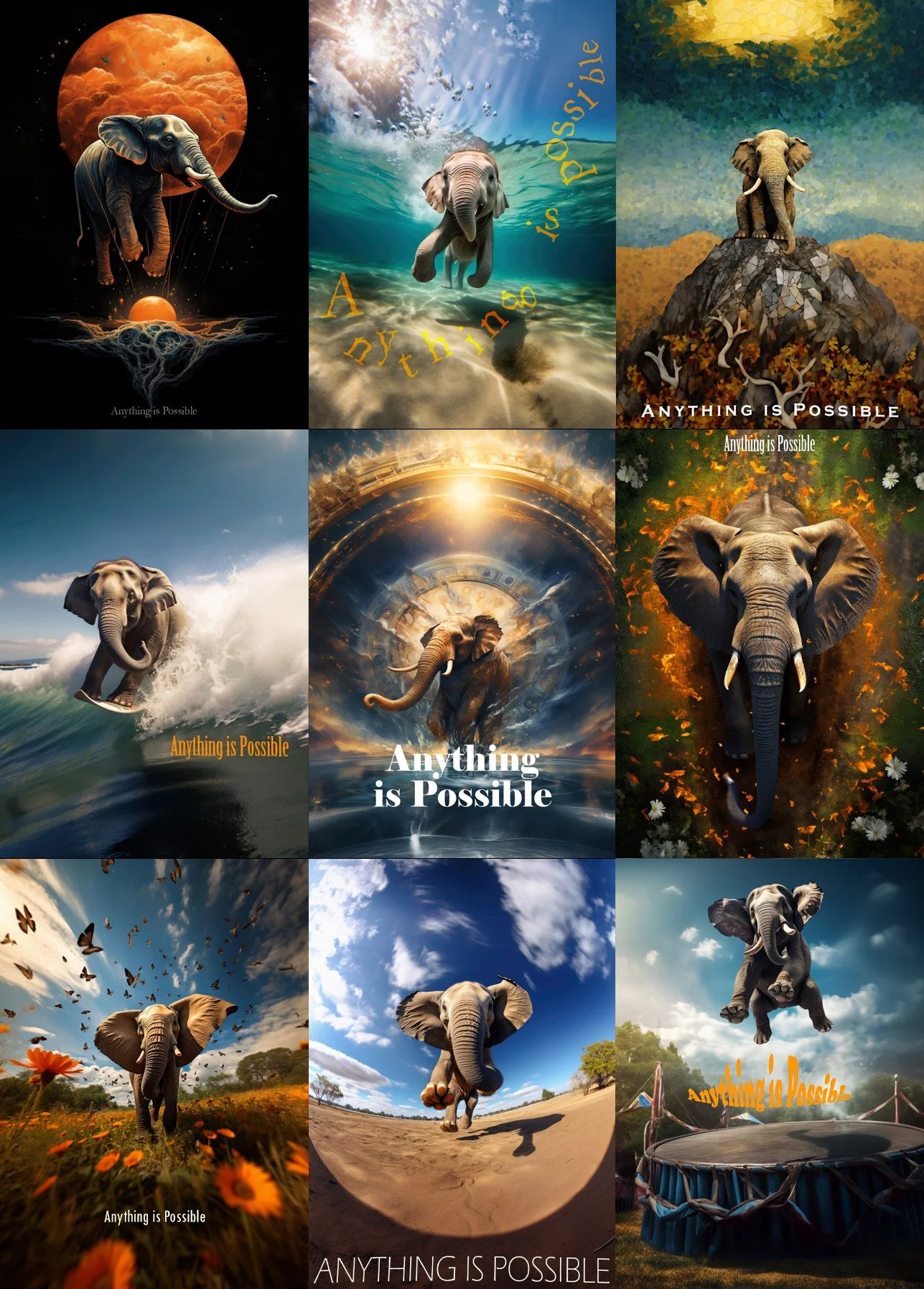2023
Warmest wishes from our team to you and your loved ones for the holiday season and for 2024!
Sharing this holiday greetings with an accompanying commissioned artwork is now an unbroken twelve-year-old tradition.
In a year that saw the remarkable ascendancy of AI, we decided to explore the possibility of AI-assisted or directed artwork. Stef-d, this year’s artist, was initially trained on paper, pen, and paint but eventually embraced digital tools including, most recently, AI image generation software suites.
In 2013, our chosen artist, Jara Zambrano took three weeks of partial working days to produce a masterpiece for us. In comparison, with less than a day’s effort, Stef-d was able to create not one but nine spectacular images that we loved. This year's "image" is a poster of all nine images!
What we learned and what we still have questions about
We are impressed and adore the poster that Stef-d created for us. As hoped, the process has illustrated the power of these tools to change how work gets done and who will do it. Considering the output and time spent on the task, there was an increase in productivity of over 6000%.
Although many voices are calling for a slow-down and a rethink of who will benefit and who could be harmed, the genie is already out of the bottle and with this level of increase in productivity, it will be challenging to rein in the stampede of corporate interest who want to press their advantage or avoid falling behind.
A seismic shift in how we work and how we discover and consume content is inevitable. What also seems inevitable is that there will be winners and losers. There will be significant benefits for some and harm to others. For a broader perspective, we expanded our considerations to include LLMs (like ChatGPT) that have recently exploded in capacity and are more relevant to our work. We also pondered the benefits and potential harm for the general population who use these tools to find information or who consume the content created by or with the help of LLMs.
Right now, we have a lot of questions and not a lot of answers:
As the cost, skill, and effort required to produce content decreases dramatically, how will workers who produce this content be affected? How will the value and expectations of their output be changed?
Cheap content will flood our digital world. We will collectively face the issues of trying to detect outright falsehoods as well as deliberate or accidental bias. How will this be done at scale?
Who will produce the reference (foundational), content that AIs tools rely on?
Will some groups of our population be put at a disadvantage because of their inability to use the new tools or because of the use of these tools?
What we plan to do
Our contribution to answering these questions will be to do what we do best – and that is to work with those impacted to observe and analyze how they are traversing this new world.
Our current work on researching the experience of finding information or completing tasks on public institutions’ sites has been bound by the parameters of the technology of a year ago. Search and in-site navigation was what was available to the public and thus the experience we analyzed. A third option is now available: consumers are now using LLMs to discover, consolidate and refine information and data from many sources.
We are just beginning to get inquiries to conduct research on the practices and experiences of consumers using LLMs to find information on public institution websites. We will report back on what we find.
Decisions we made
The fee we offered to this year’s artist was the same as we have offered in previous years.
We will continue to hire artists to create original images (without the help of AI tools).
This newsletter was written without the aid of LLMs.
Statement from the Artist
I was trained in art at university before Photoshop and CGI were taught in art programs. I first learned using paint, pencil and paper, by trial and error, then digital. My stubbornness was my motivation: because I felt I wasn't good enough as an artist, I'd keep trying, and I would envy and borrow from the best, hoping I would get better.
To create this Holiday card, I generated 728 images in a total of 71 minutes of computing by an AI model, trained on hundred million images from the internet. I didn't pick a brush in Photoshop, no layers or CTRL-Z. I wrote prompts, requesting an elephant doing something, somewhere, + keywords asking for emotions, posing, mood, etc. I don't claim the credits for executing that work... it was an art direction work. And the results are technically better, and diverse, than I could create myself. What I am absolutely certain of now, is that being a digital artist will never be the same again.
Last August, I read that AI has already created 15 billion images in a year. And it’s only the beginning! Still many questions to address: ethics, copyrights, economics, education, skills, productivity, jobs, creativity...and a lot of unknown for future generations. But today, anything is possible, really.
— Stef-d (stefd.photo@gmail.com)
What we want to believe is possible
The makers of LLMs, in a very dramatic fashion, proved that what was thought to be impossible (or improbable) was indeed possible. What is also possible (and hopefully not improbable) is that we can leverage the good in this emerging technology to the benefit of humanity while avoiding harm to some of us.
The Jumping Elephants Team
P.S. We send out a monthly email newsletter that compiles the latest UX news, case studies, best practices, and initiatives - everything you need in one place.

